
This article presents a list (with photos, descriptions, addresses and websites) of the main and most "bright" attractions and museums of Bamberg, which are worth visiting first of all or if little time is allocated to the city (1-2 and 3 days).
If you need the most complete and detailed list of attractions, museums, viewing platforms, significant objects and interesting places in Bamberg, then you can view it here →
By modern standards, Bamberg is a small city, and it is easy to get around on foot. Moving from one of the main attractions of Bamberg to another, you will fully enjoy this beautiful city, walk through its narrow streets, with buildings in the Baroque, medieval, romantic style, and houses along the river, called "Little Venice", also visit the best observation decks and cozy squares with historical buildings, which now there are cafes, restaurants, shops and accommodation facilities (hotels, apartments)

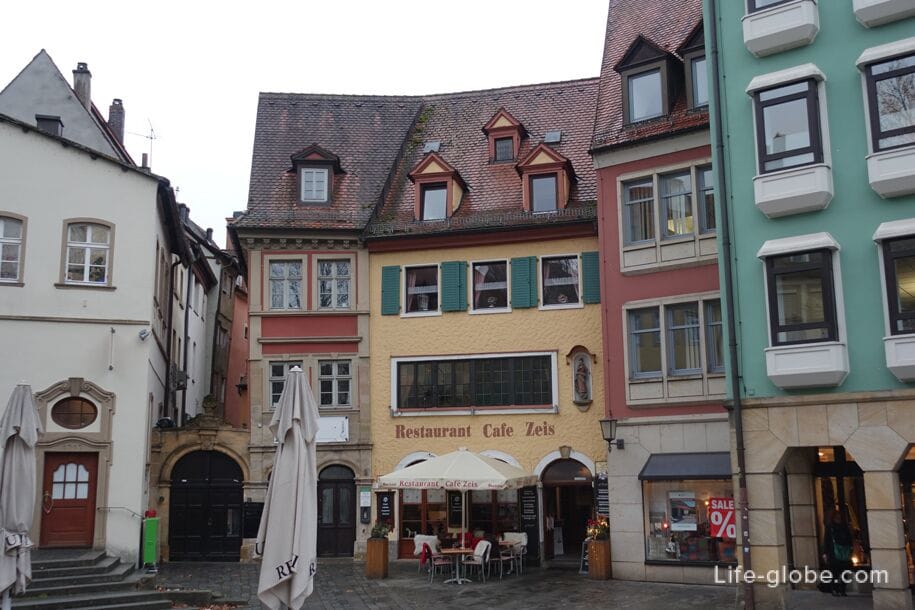

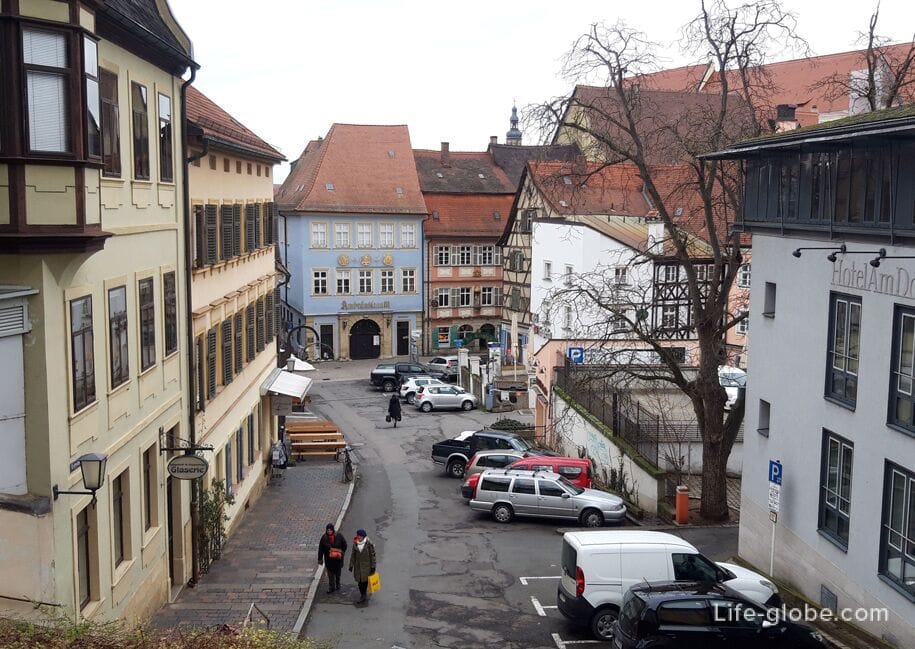

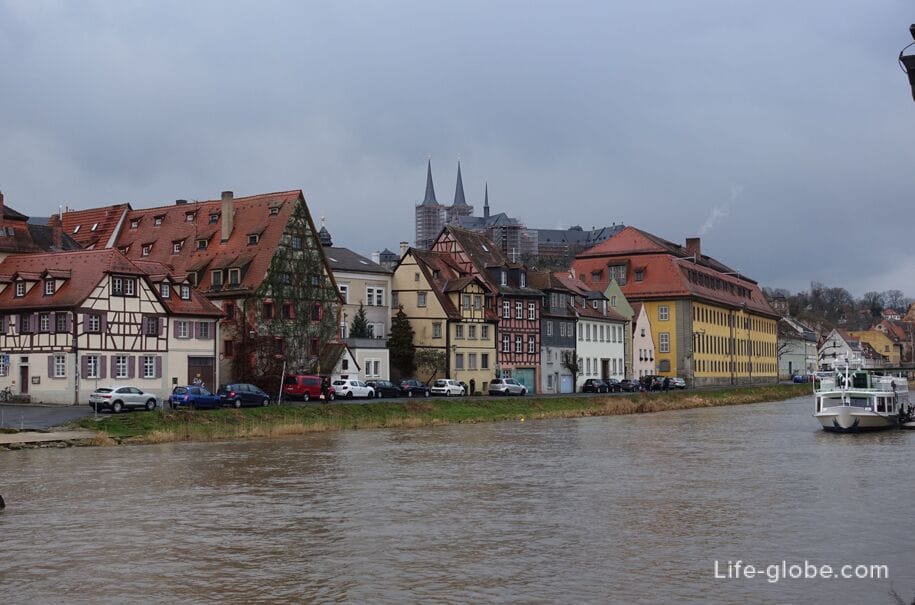
Cathedral Square (Domplatz Bamberg) is the main, one of the largest and most impressive squares in Bamberg.
The ensemble of the square has been formed for many centuries, since 1012, with the simultaneous formation of the ensemble of buildings of the square.

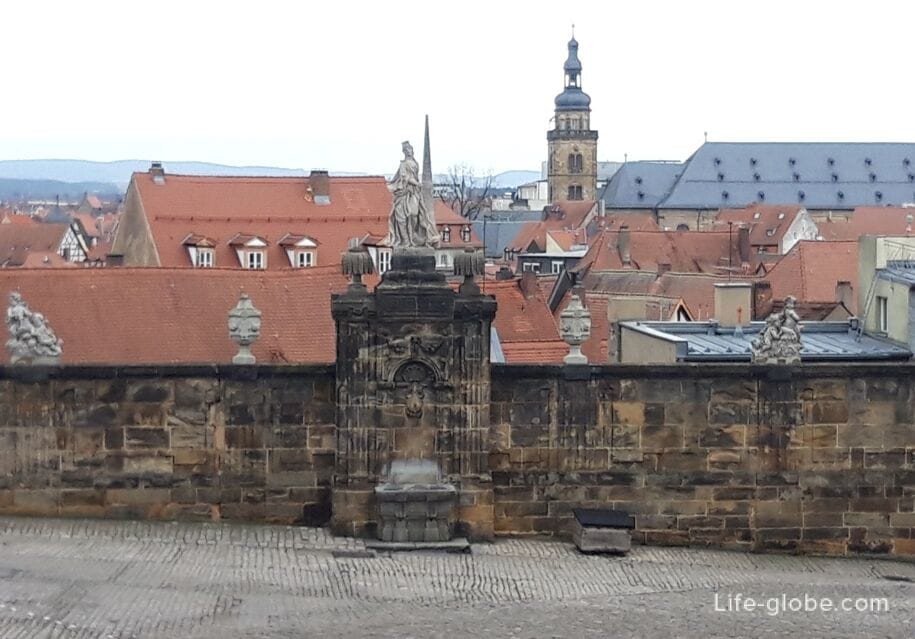
Cathedral Square Ensemble
Bamberg Cathedral (Bamberger Dom) - the Imperial Cathedral of Bamberg, which dates back to the 13th century, is the dominant of the historical center of the city, as well as an example of Romanesque architecture with Gothic elements.
This is the main temple of Bamberg - the Cathedral, the official name of which is the Bamberg Cathedral of St. Peter and St. George (Bamberger Dom St. Peter und St. Georg).
Inside the cathedral stands out: two choirs, crypts, chapels, altars and an organ; frescoes, epitaphs and sculptures, the most famous of which is the Bamberg Horseman; as well as tombs, including the tomb of the holy imperial couple - Henry II and his wife, the Holy Empress Cunegonde, King Conrad III, Pope Clement II and Bishops Gunther and Otto II.
Bamberg Cathedral website: bamberger-dom.de . More about Bamberg Cathedral...
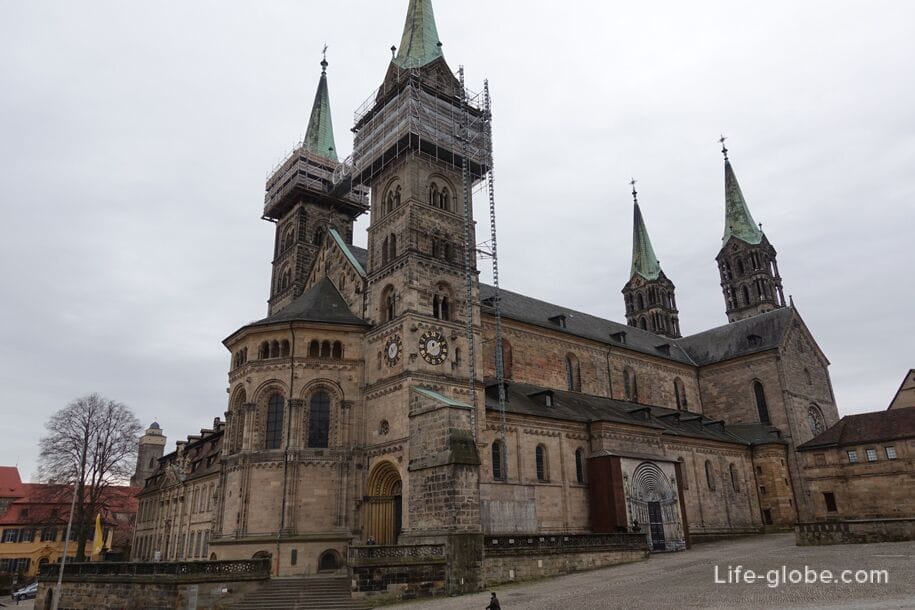
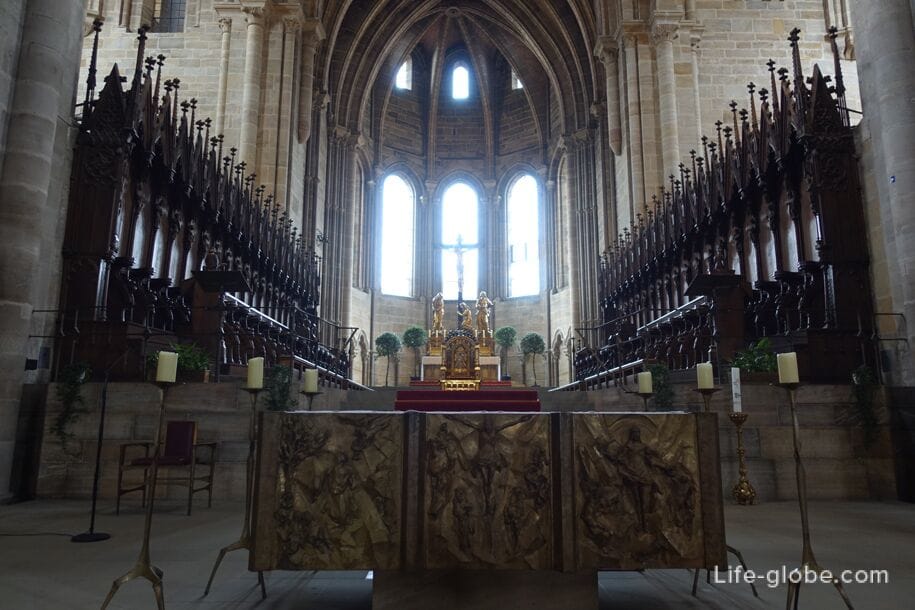
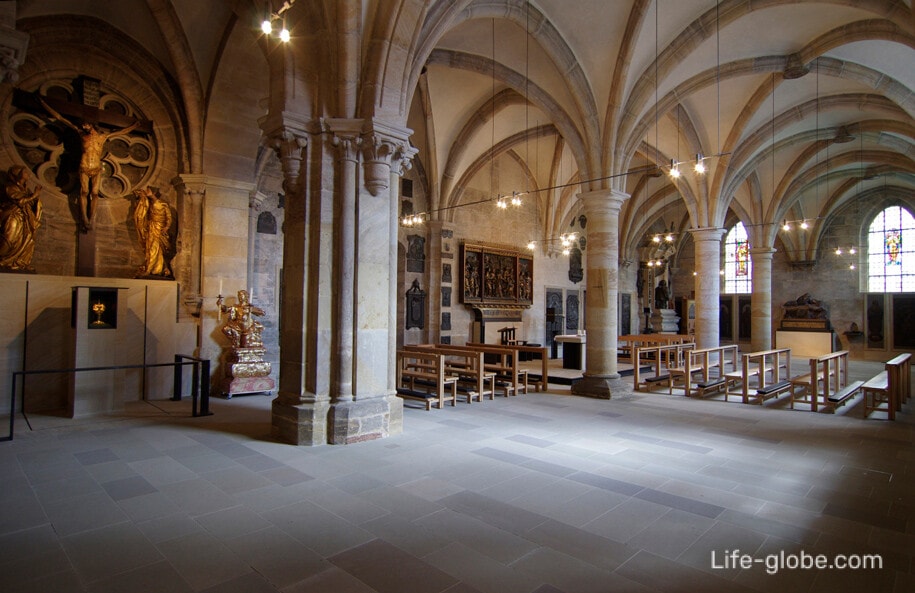
In the neighboring chapter house, to the south (right) of the Bamberg Cathedral, there isCathedral Museum (Diözesanmuseum Bamberg).
The cathedral's chapter house was built by master builder Balthazar Neumann between 1731 and 1733 in the Baroque style. The first plans of the museum were made back in 1907, but only in 1966 it opened under the auspices of the Metropolitan.
The collection of the Museum of the Diocese of Bamberg focuses on treasures and architectural sculptures from Bamberg Cathedral, dating from the time of Henry II and his wife and up to the 21st century.
The museum's website: dioezesanmuseum-bamberg.de.
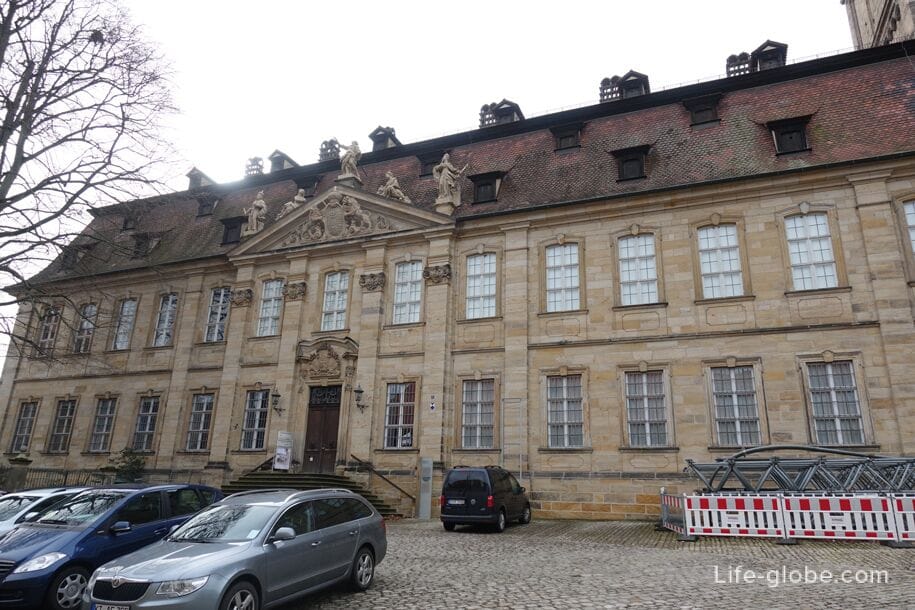
The Old Courtyard or Old Residence (Alte Hofhaltung Bamberg) is a complex of historical buildings that previously served as the residence of bishops.
Initially, the palace of Emperor Henry II was located on the site of the Old Courtyard. Since the diocese was founded in 1007, it is likely that the palace also served as the bishop's residence.
After the palace was left at the full disposal of the bishops, in the 15th and 16th centuries they rebuilt the palace to suit their needs as a complex of buildings in the style of the German Renaissance.
Today, the Old Courtyard stands out with a gate with sculptures, a building with a powerful bay window with rich details in the Renaissance style, which adjoins the gate and a courtyard surrounded by ancient half-timbered buildings.
In the Old Courtyard there are: the Historical Museum (Historische Museum) and the former Catherine Chapel (Katharinenkapelle, Katharinenkapelle), which offers a venue for civil weddings, concerts and lectures, and where from May to October, under the name "Light and Shadow", the 1000-year history of the city is performed (works as a Shadow Theater, Theatre of Shadows).
Website of the historical museum: historisches-museum.
Shadow Theater Website: theater-der-schatten.de/en/theatre. More about the Old Courtyard, the museum and the theater...
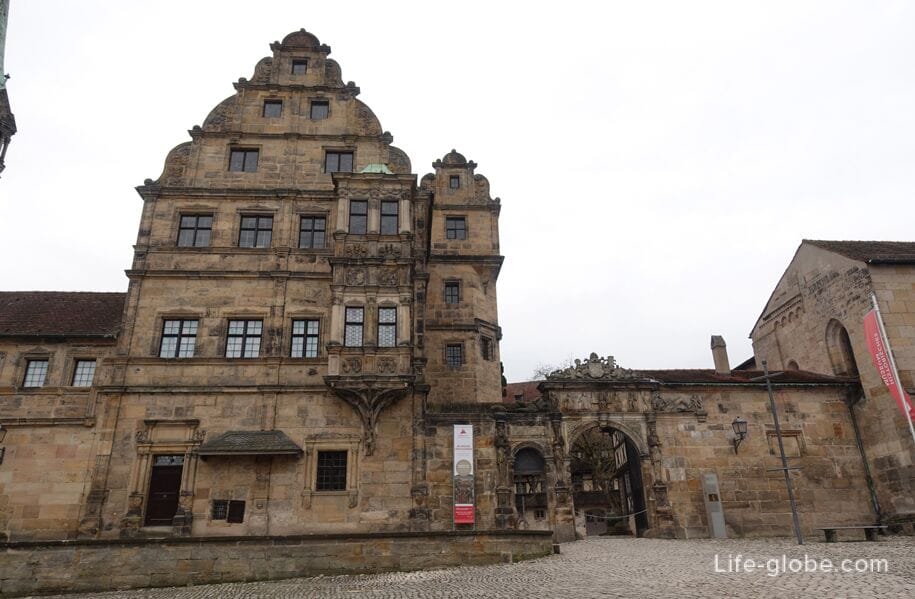
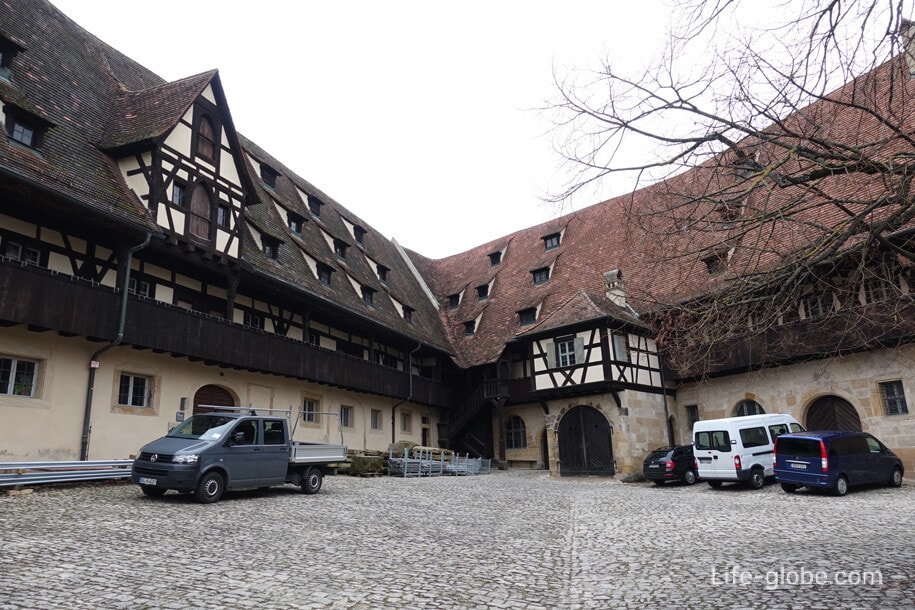

The new residence (Neue Residenz), erected opposite the Strictly Courtyard from the beginning of the 17th century, when the then existing residence (now the Old Courtyard) was already cramped for bishops.
The construction of the New Residence took place in two stages for more than 100 years.
Today, the residence building has several interconnected wings (sandstone buildings), which form a long zigzag structure with architectural portals and various discreet decorations.
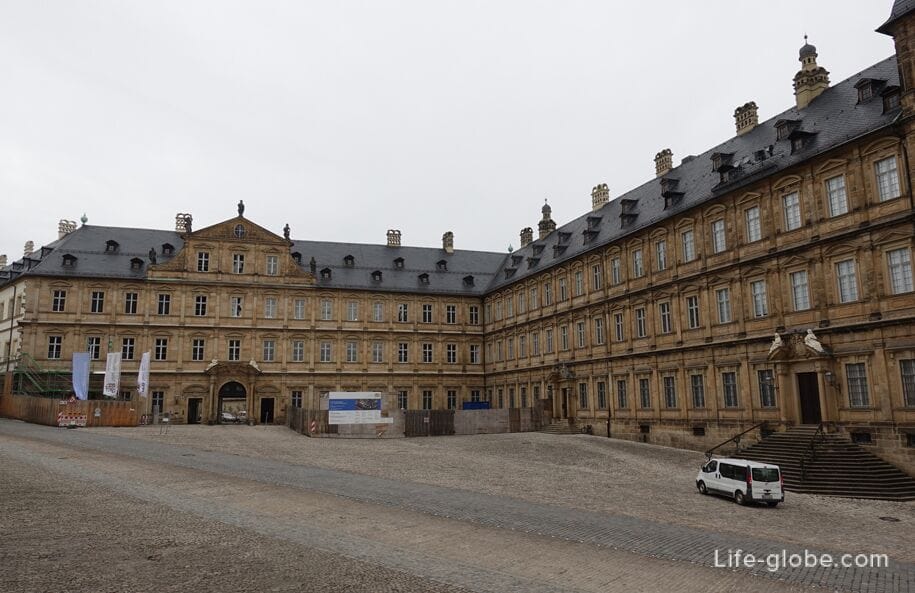
The New Residence houses:
- The State Gallery of Bamberg (Staatsgalerie von Bamberg), which presents almost 50 halls and rooms of the late 17th and 18th centuries in various styles, where art treasures from late Gothic to historicism are presented, including more than 500 pieces of furniture, painting, sculpture and textile art.
Website of the State Gallery (New Residence): residenz-bamberg.de;
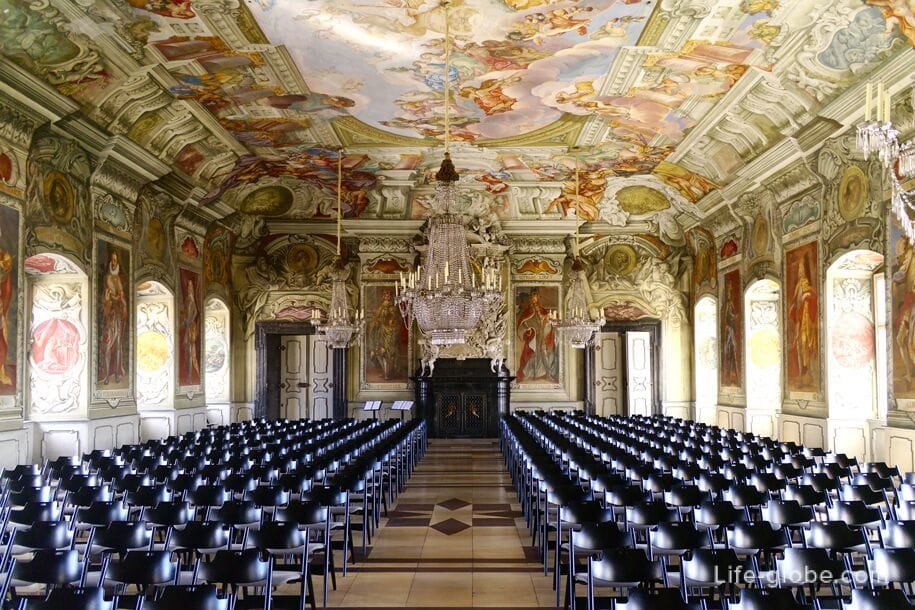
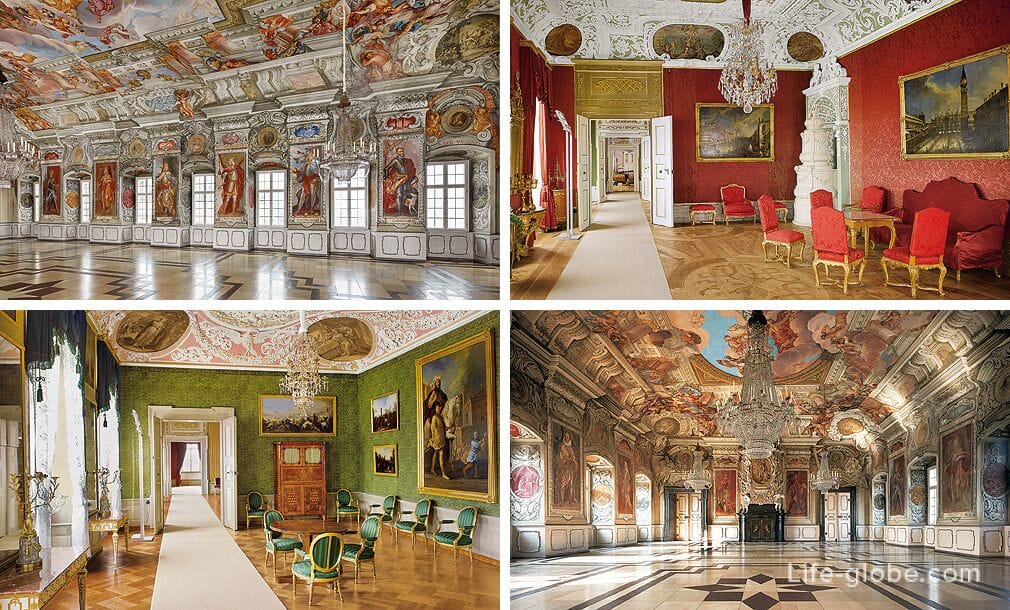
- The Bamberg State Library (Staatsbibliothek Bamberg), located in the east wing of the New Residence and largely preserved the halls of the former residence with stucco and frescoes.
Website of the Bamberg State Library: staatsbibliothek-bamberg.de;

- rosary (Rosengarten Bamberg) - a rose garden located outdoors, between the wings of the New residence (courtyard).
Roses and lime trees grow in the garden, paths are laid out, there is a rococo pavilion (now a cafe), sculptures and a memorial to Otto and his wife Amalia in a blind arch in the wall.
The rose garden offers panoramic views of Bamberg, as well as Michelsberg with the former Benedictine monastery. Learn more about the New Residence...
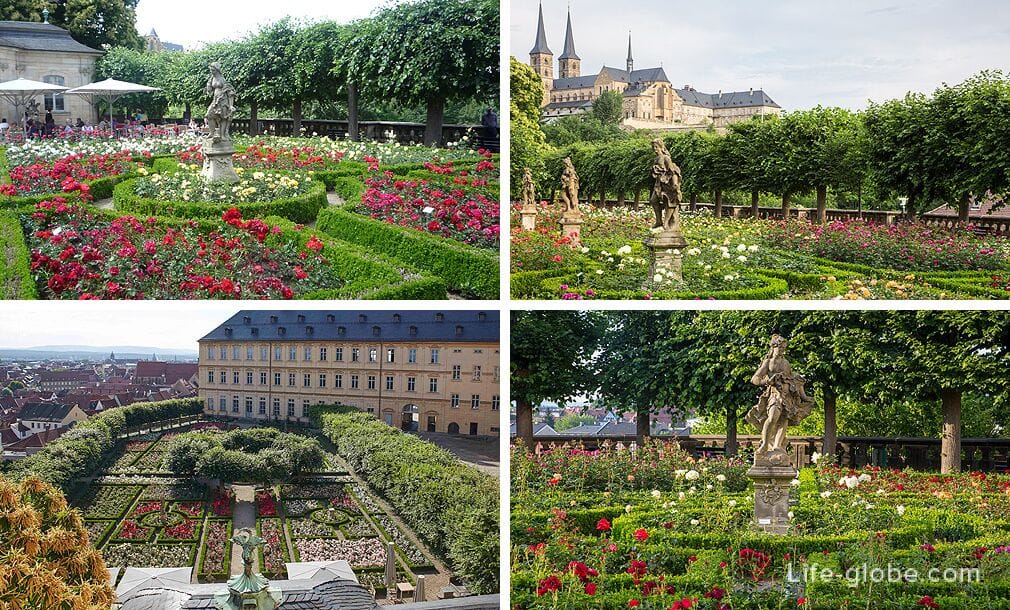
St. Michael's Abbey, also known as St. Michael's Monastery (Kloster Michaelsberg / Mikaelsberg) is a former Benedictine monastery founded in 1015 by the first bishop of Bamberg, Eberhard, at the suggestion of Emperor Henry II.
Today, the walls of the former monastery are: a nursing home, the current church of St. Michael with the grave of Otto I (Michaelskirche), a cafe, and the Franconian Beer Museum (Fränkisches Brauereimuseum Bamberg) has been opened in the former monastery brewery.
There is a Baroque garden near the monastery, and panoramic views of Bamberg open from the terraces.
Website of the Franconian Beer Museum: brauereimuseum.de .
Address of St. Michael's Abbey: Michelsberg 10, Bamberg. More about St. Michael's Abbey...
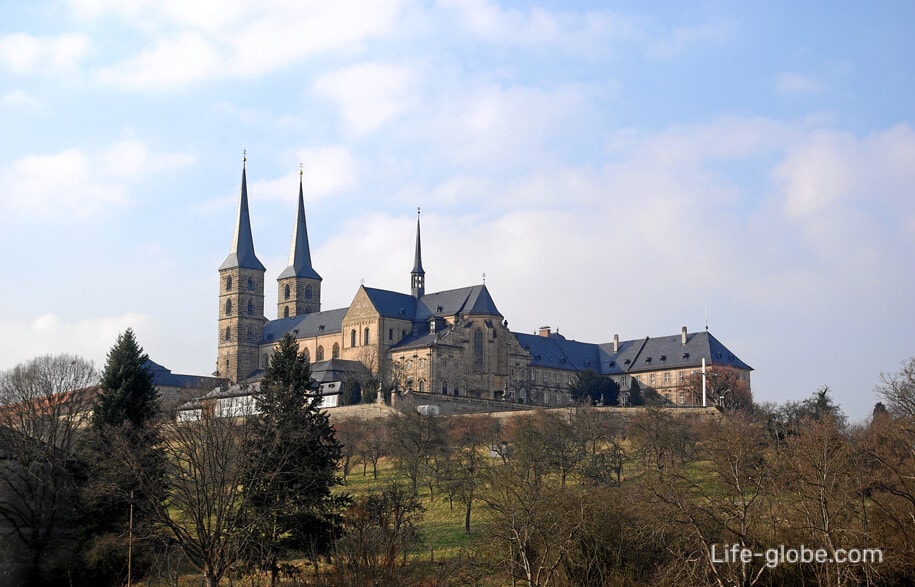
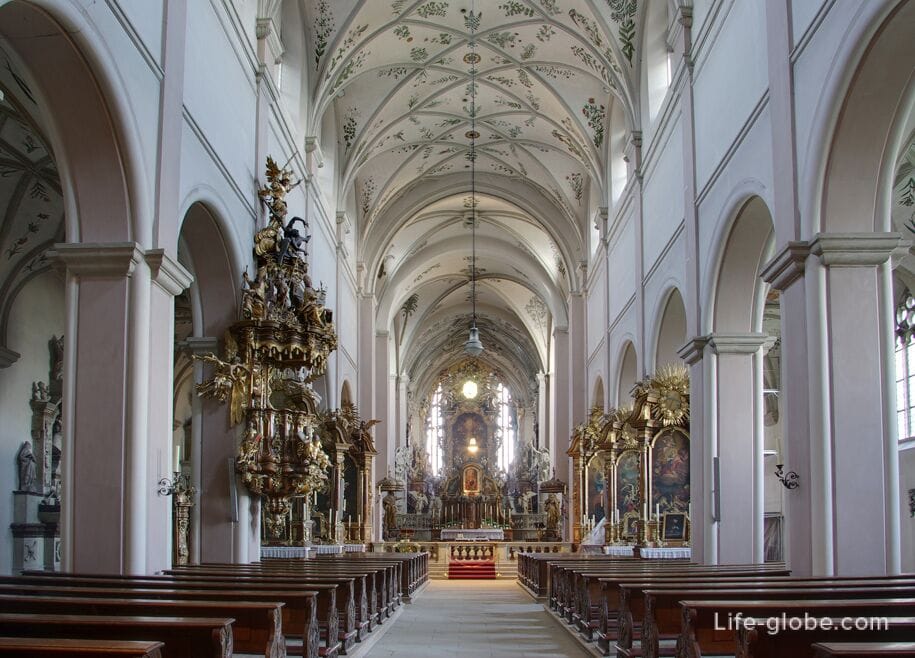
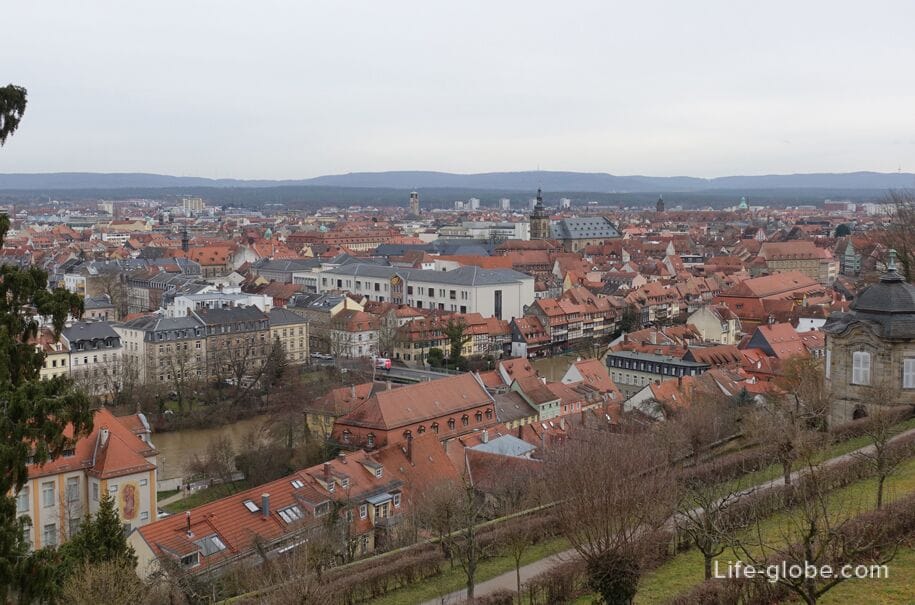
The Old Town Hall of Bamberg (Altes Rathaus Bamberg) is a medieval town hall, which is one of the most important and beautiful buildings that characterize the historical center of the city.
The Town Hall stands on an artificial island in the middle of the Regnitz River, between the former episcopal and working (urban) districts of Bamberg.
The Town Hall was first mentioned in 1387 and is a complex of buildings with a Bridge tower and adjacent bridges with sculptures. A bridge passes through the tower of the town hall, so the town hall is sometimes called the "Town Hall on the Bridge".
Today, the Ludwig Museum operates within the walls of the old town Hall, with a collection of Strasbourg faience and porcelain from the collection of the chocolate manufacturer Ludwig called "Baroque Splendor". Adjacent to the exhibition is the famous Bamberg Rococo Councillors' Hall. Museum website: sammlung-ludwig. Learn more about the Old Town Hall and bridges...
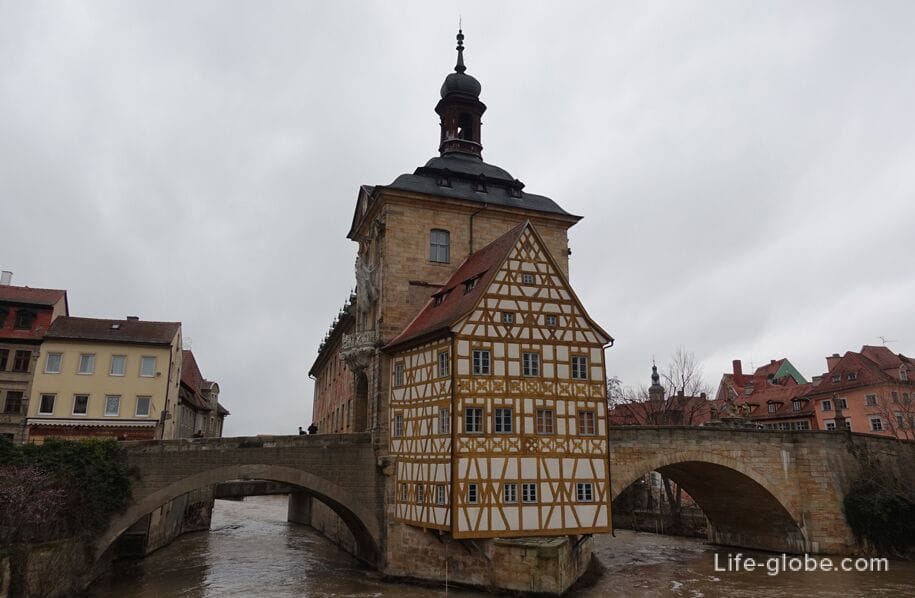
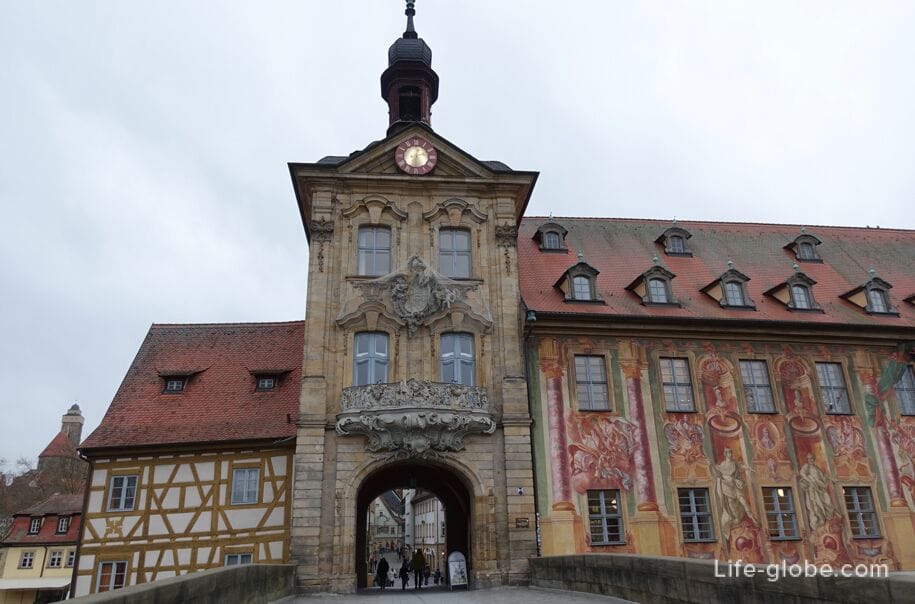
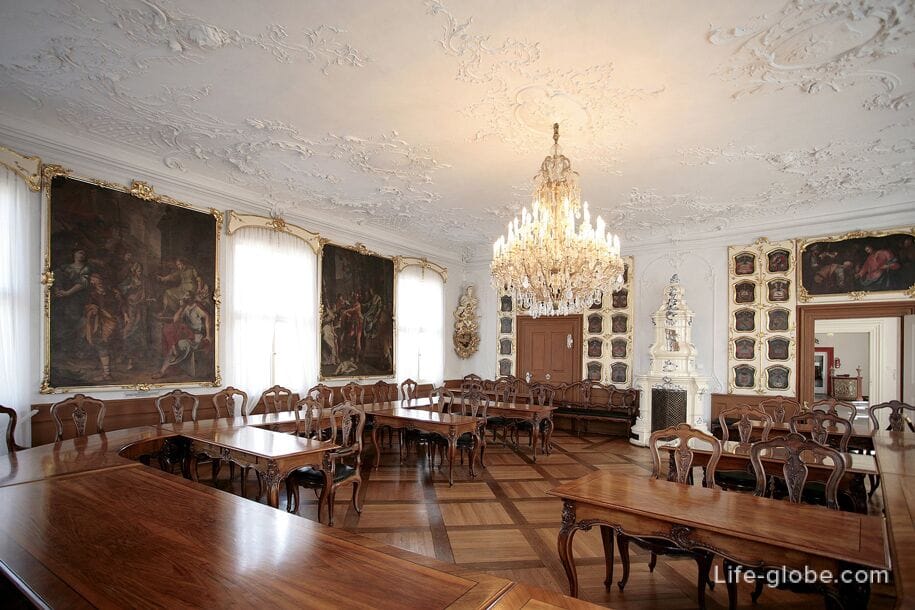
At the Cranes (Am Kranen) is an embankment, a street and a square on which there are several significant objects and which is located near the bank of the Regnitz River.
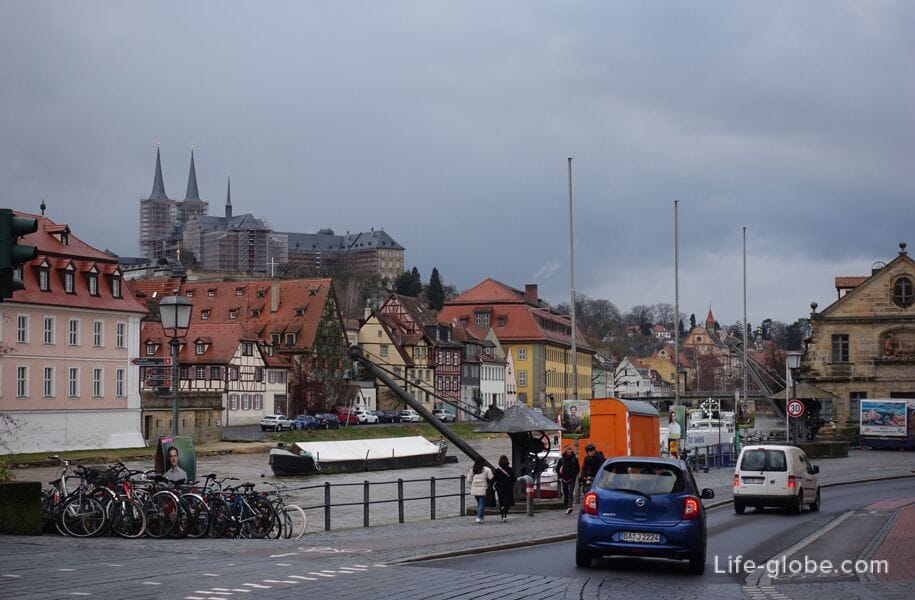
Attractions of the square "At the Cranes"
The head of Centurion I (Igor Mitoraj "Centurione"), which is a modern sculpture in Bamberg.
The bronze sculpture was created by the Polish-born master Igor Mitorai, who worked mainly in Paris and Italy.
The head belongs to classical antiquity, but at the same time it is not integral, but with damage, which, according to the plan, should lead to philosophical reflections.

Historical monuments of cranes "Am Kranen".
Once it was the heart of the city's port facility. Its importance comes from the fact that Bamberg received the so-called stacking from Emperor Barbarossa in 1156, according to which passing merchants had to unload their goods in Bamberg and put them up for sale within 3 days before they were allowed to move on.
Monuments to two cranes gave the name of this small square - "At the Cranes" (Am Kranen).

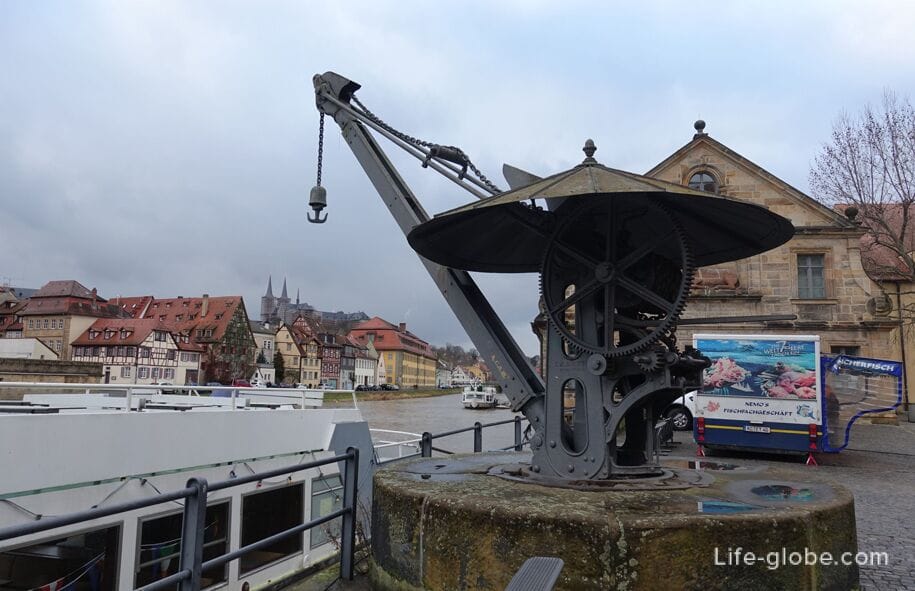
Schlachthaus is an old slaughterhouse built in 1741-1742.
On the pediment of the building of the Old Slaughterhouse there is a bas-relief with the image of a bull and an inscription in Latin: "To be a bull now, but not a calf before is unnatural, but I was lucky. The artist's hand made me a bull before I was born a calf."
Today the building is used as part of the University of Bamberg.
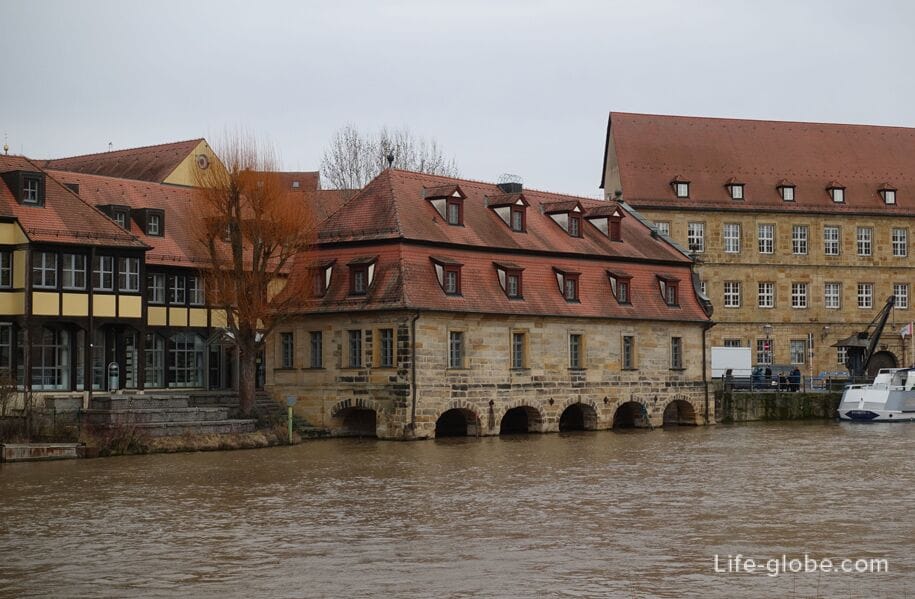
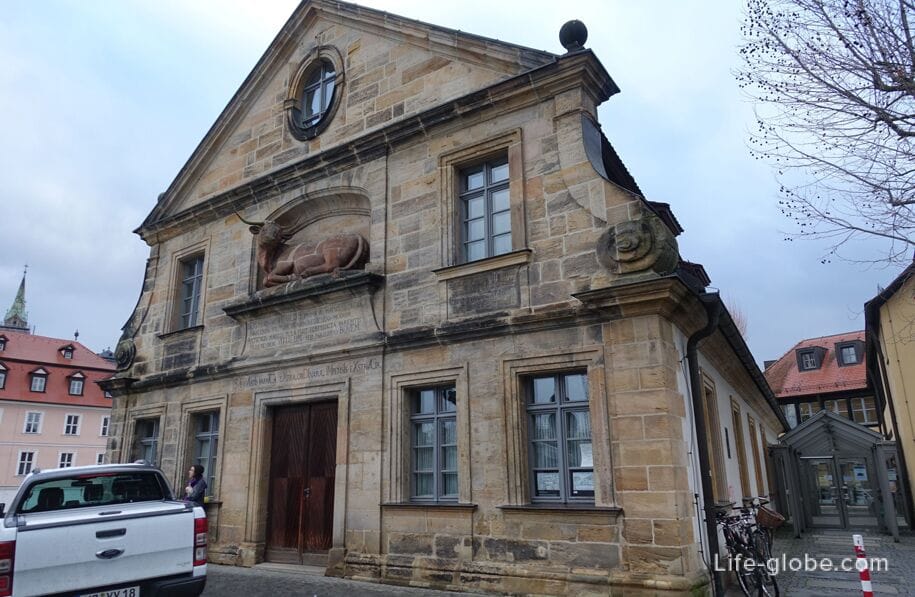
The historic Hafenrundfahrt building.
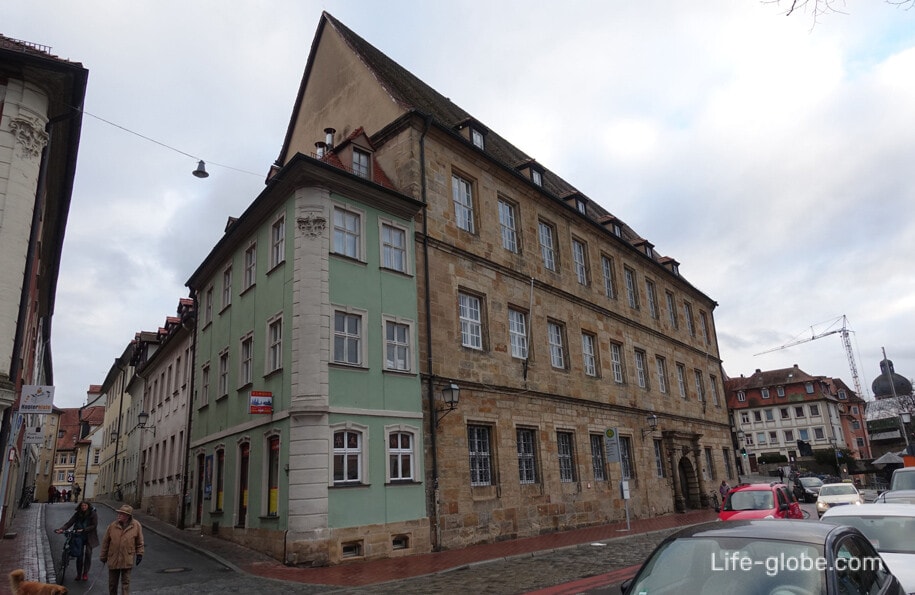
Little Venice (Klein Venedig) is a place on the Regnitz River, where small half-timbered houses with tiny gardens are located in dense rows along the banks of the river.
Previously it was a fishing settlement, and half-timbered houses mostly belong to the Middle Ages.
"Little Venice" stretches downstream of the Regnitz River from the square "At the Cranes".
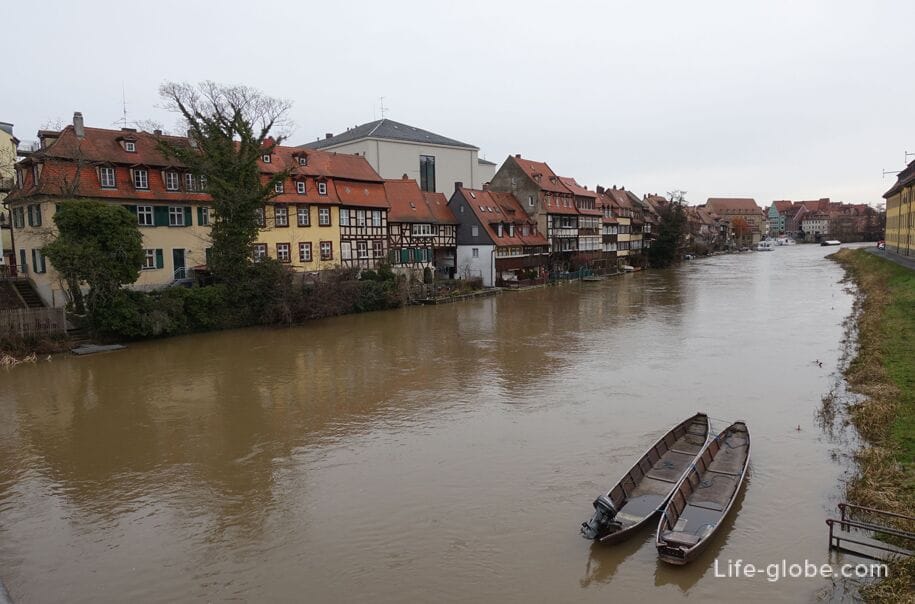
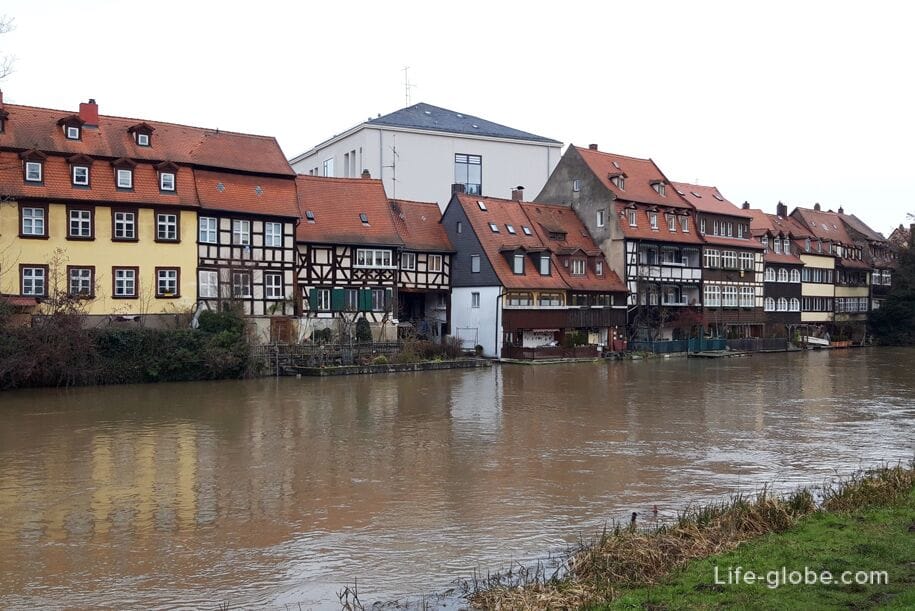
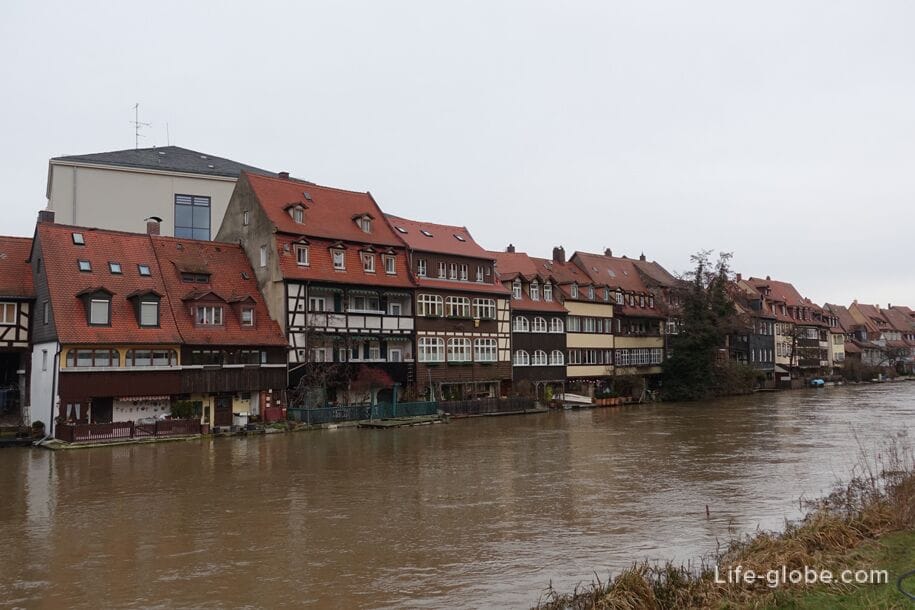

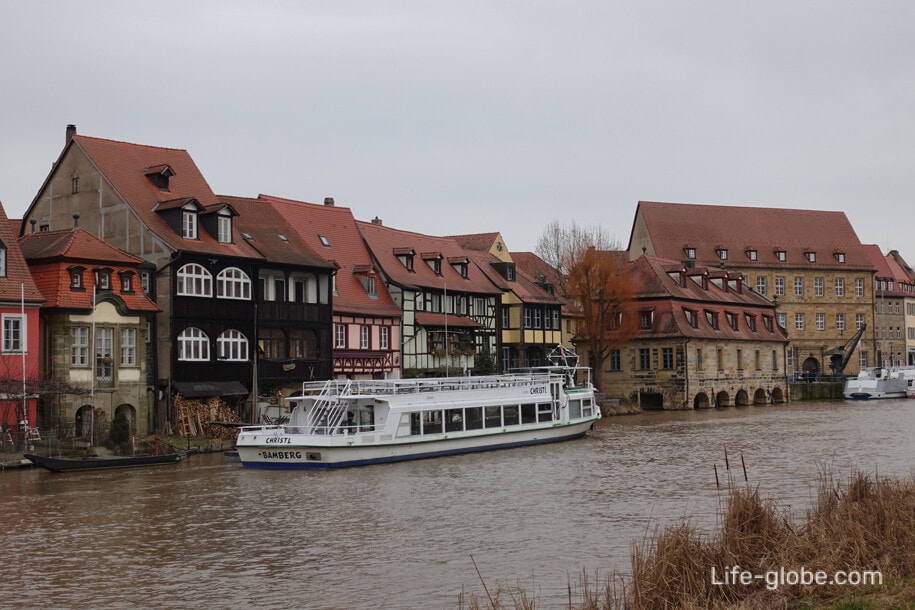
You can see "Little Venice" both from the motes and the banks of the river, and by taking a tour on a pleasure boat, boat or canoe along the river. The pier is located on the square "At the Cranes". Learn more about the observation decks and observation points of Bamberg...
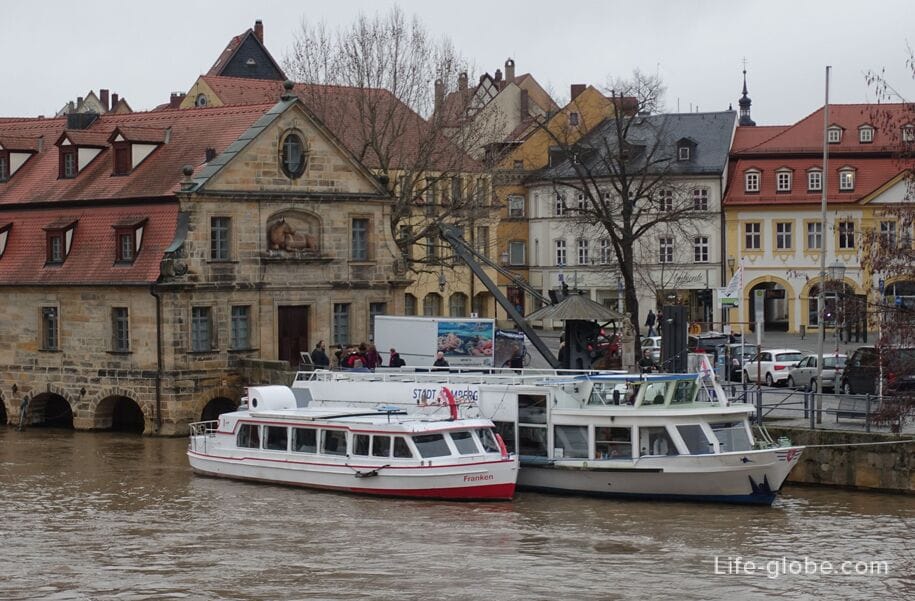
Maksplatz or Maximilian Square (Maximiliansplatz Bamberg / Maximiliansplatz Bamberg) is the most famous and one of the largest city squares in the historical center of Bamberg.
On Christmas Eve, the main Bamberg Christmas Market is located on the square and nearby streets.
The square is decorated with the Maximilian Fountain (Maximiliansbrunnen), which, like the whole square, is named after King Maximilian I. The fountain was created by Ferdinand von Miller in 1888. The fountain statues were cast in 1880.
The perimeter of the square is surrounded by historically buildings that form a characteristic urban ensemble in the late Baroque style. The main building on the square is The new Town Hall (Neues Rathaus), erected by Balthazar Neumann in the 18th century and today is the city hall. Learn more about Maximilian Square...
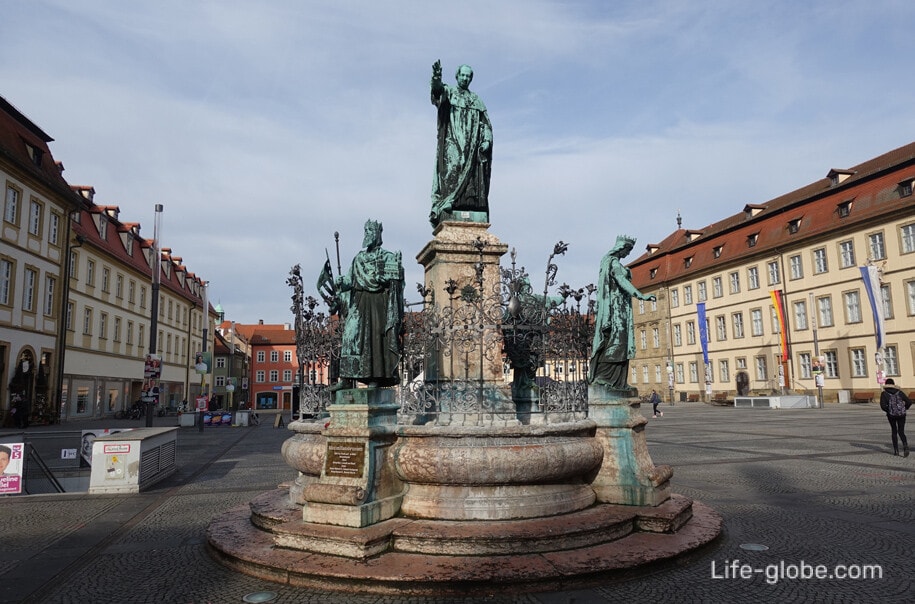

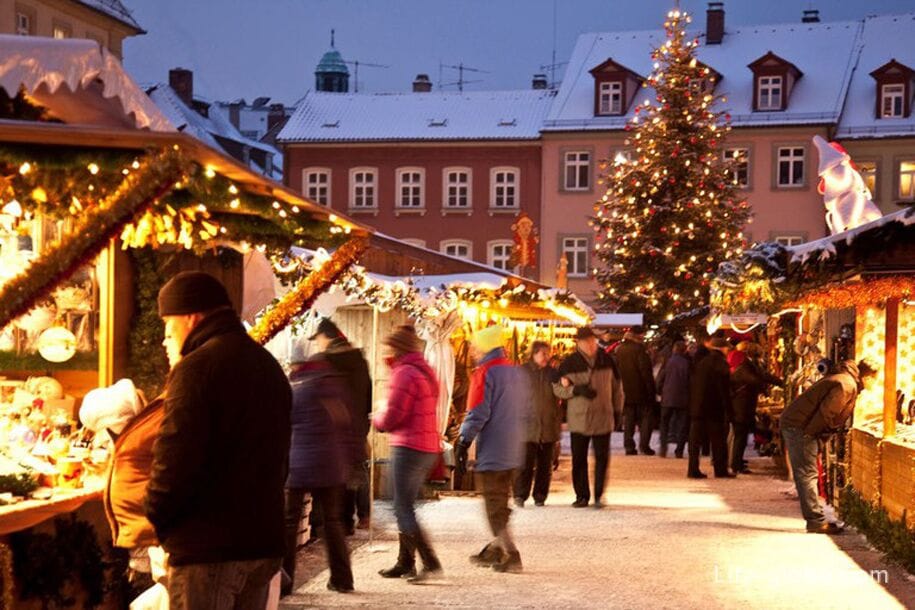
The Green Market (Grüner Markt) is a square and a street that are the main tourist spots in Bamberg.
The Green Market leads to the Maxplatz and it also houses Bamberg's main Christmas market.
Along the Gruner Markt there are historical buildings housing shops, cafes, restaurants and hotels
In the pedestrian zone of the Green Market there are stalls selling fruits, vegetables and flowers. Hence the name - "Green Market".

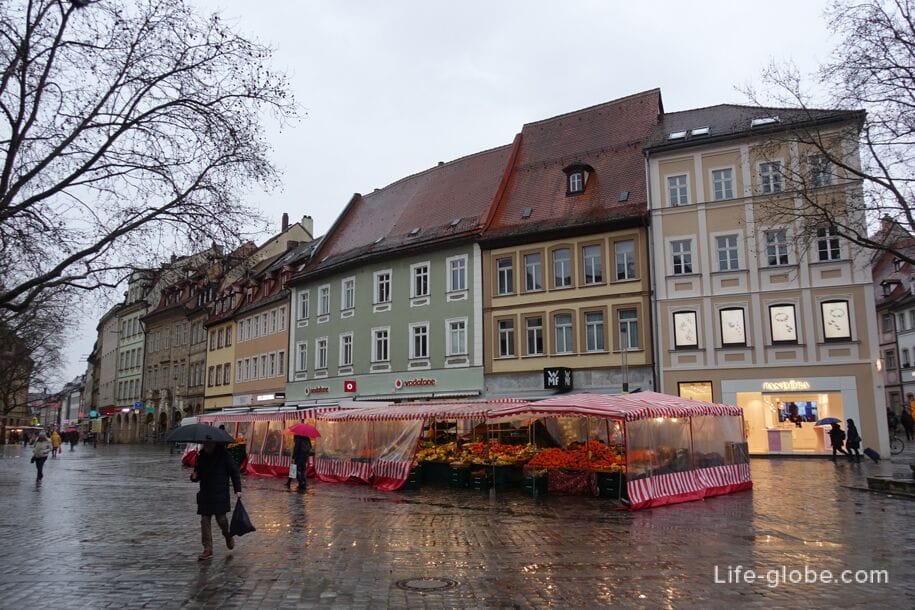
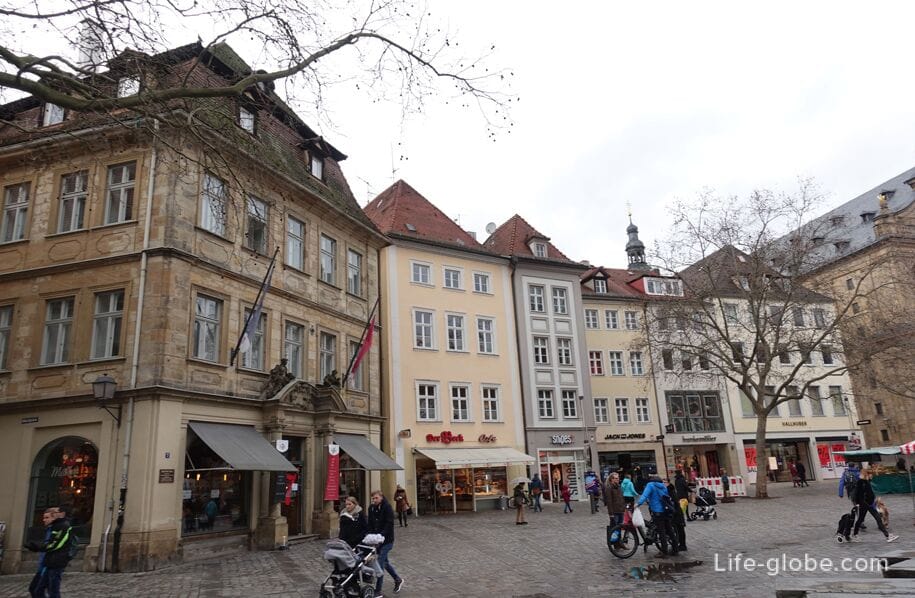
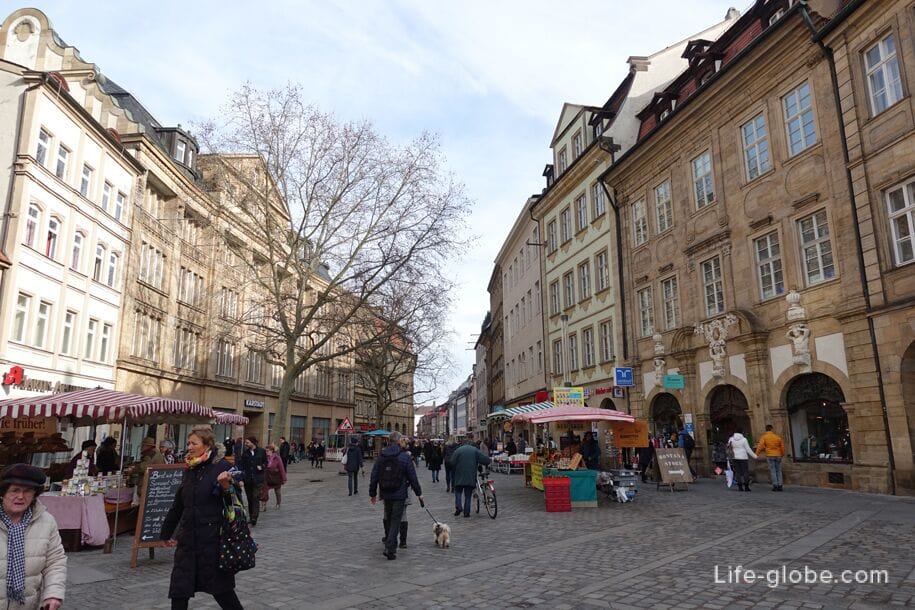
In the center of the square, the monumental fountain of Neptune (Neptunsbrunnen), which the residents of Bamberg affectionately call Gabelmann, is noteworthy.

Near the fountain of Neptune stands the beautiful Baroque church of St. Martin (Kirche St. Martin).
The origin of the church is closely connected with the Jesuit Order, as it was built as a university church and a Jesuit college church. The church was founded on August 16, 1686 and consecrated on May 17, 1693.
The mighty 55-meter-high church tower is not one of the tallest in the city, but it is a striking element of the urban landscape thanks to the surrounding balustrade and the "IHS" on the weather vane, which can be seen from afar. The tower was built in 1696.
The interior of the church harmoniously intertwines modesty and splendor of decoration. The church is notable for: altars, pulpit, organ, sculptures and a false inner dome with a dome fresco by Giovanni Francesco Marcini (1714-1716).
Church address: Grüner Markt 19, 96047 Bamberg.
The church's website: kirche-stmartin-bamberg.de.
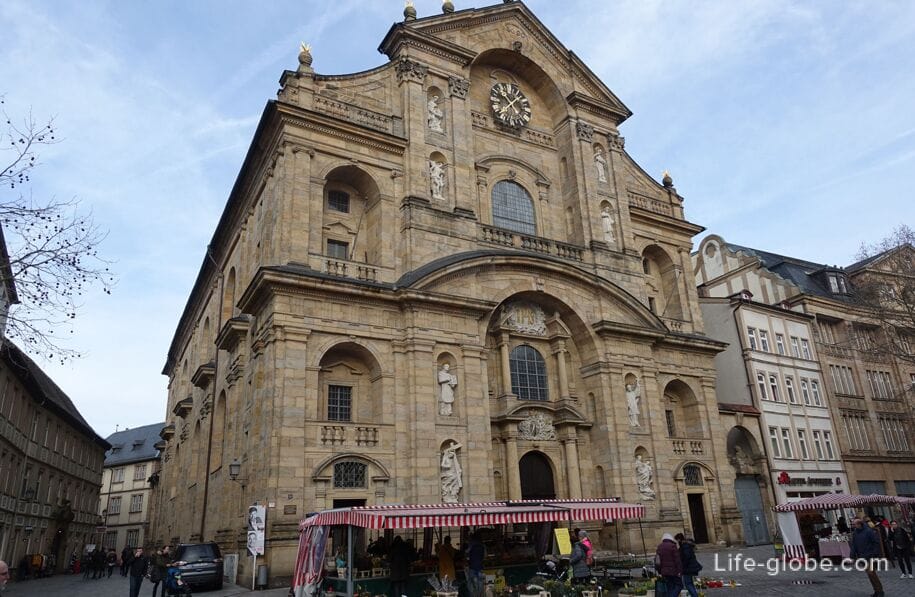
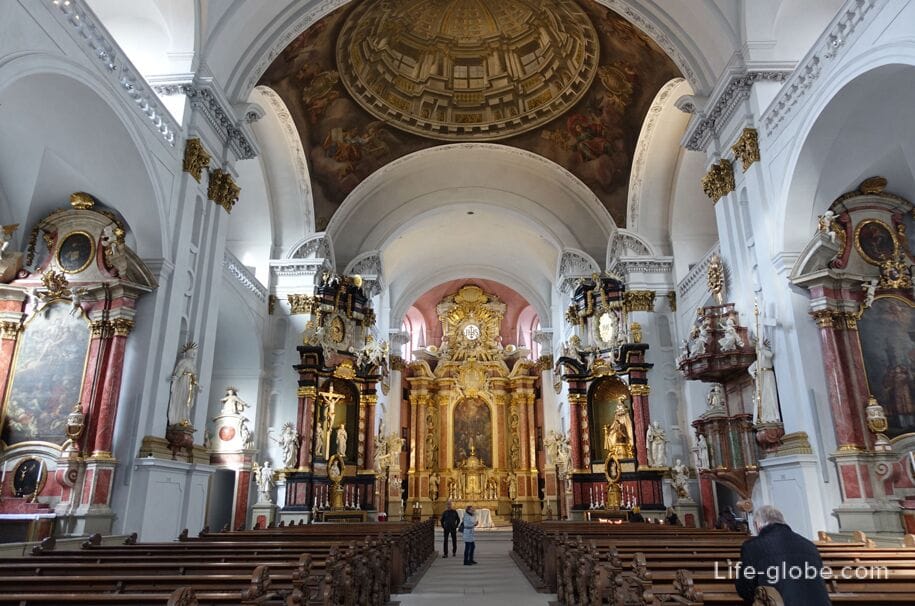

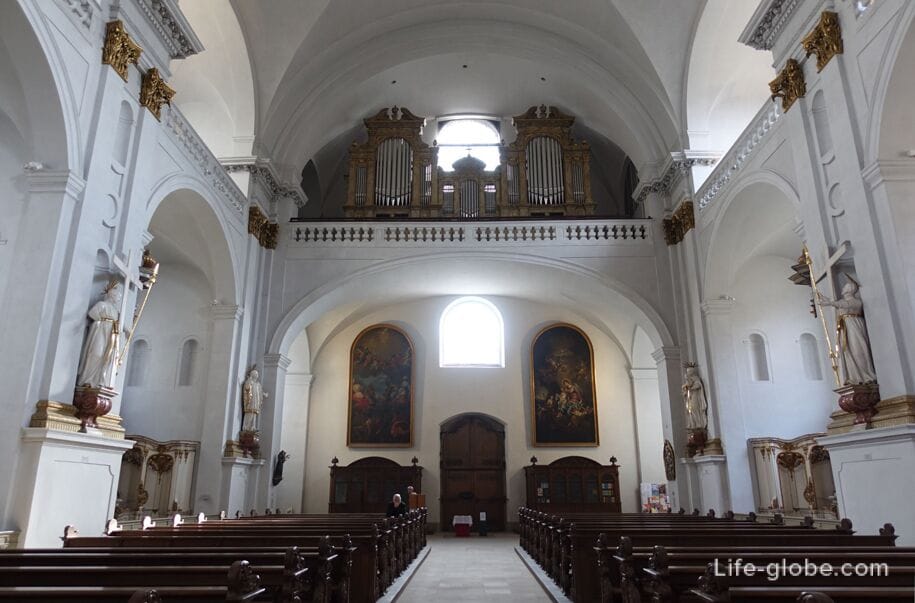
The Museum of Natural History (Naturkunde-Museum Bamberg), located in the halls of the former Jesuit College, combines the historical with the modern.
The most notable in the museum is the Bird Hall or the Bamberg Bird Hall (Vogelsaal), which exhibits numerous preserved specimens of animals, especially birds, as well as corals, shells, fish, snakes and other creatures.
The Bird Hall was founded in 1791 by Prince-Bishop Franz Ludwig von Erthal as a "cabinet of natural objects". The two-storey hall in the early classical style has survived to the present day and can be considered one of the most beautiful in this style in the world.
In addition to the hall, the museum also houses modern exhibitions on various topics of natural history.
Museum address: Fleischstraße 2, 96047 Bamberg.
The museum's website: naturkundemuseum-bamberg.de .
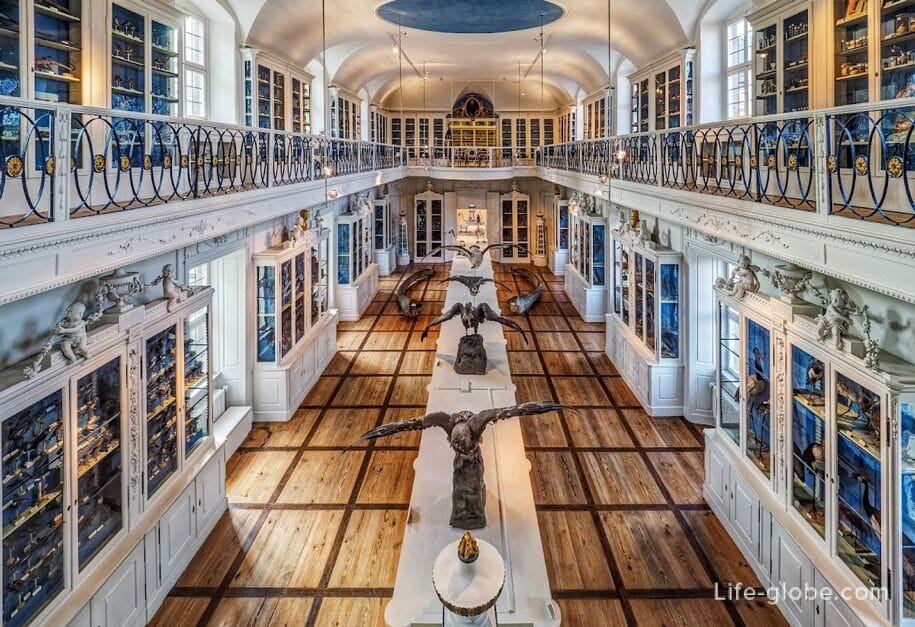
The Bettinger House (Böttingerhaus) is a beautiful former Baroque palace, which was built in 1707-1713 on the model of Italian palazzi by the wealthy court adviser Johan Ignaz Tobias Bettinger.
The palace was built on the surviving basements of two demolished medieval houses. Studies attribute the design of the facade and gardens of the palace to Maximilian von Welsch.
Today, this majestic building, which is considered the most important bourgeois German Baroque palace in Bamberg, has an ornate courtyard and a garden with terraces.
The walls of the building house an art gallery (Kunstgalerien Böttingerhaus) of old and modern art.
Of the previously valuable interior decorations in the representative halls of the upper floor , the molded ceilings of Ya have been preserved . Jacob Vogel with frescoes by Jacob Gebhard, which depict the deeds of Bettinger and his prince. Of particular importance is the street facade, made with a lush plastic decor.
The figures crowning the windows of the building - generals, officers and soldiers - recall the important role of Bettinger in the War of the Spanish Succession (1701-1714).
The address of the palace: Judenstraße 14, 96049 Bamberg.
Gallery website: kunstgalerie-boettingerhaus.
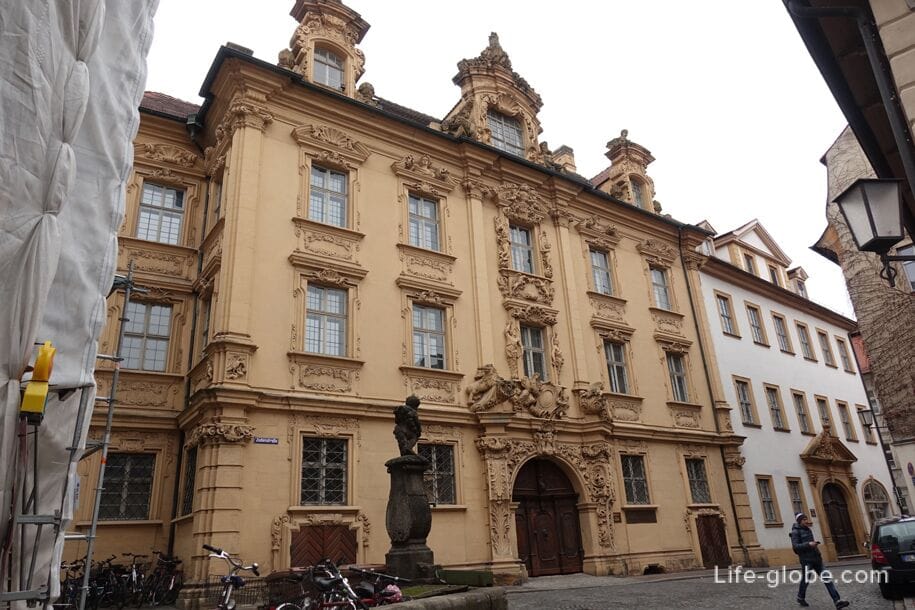
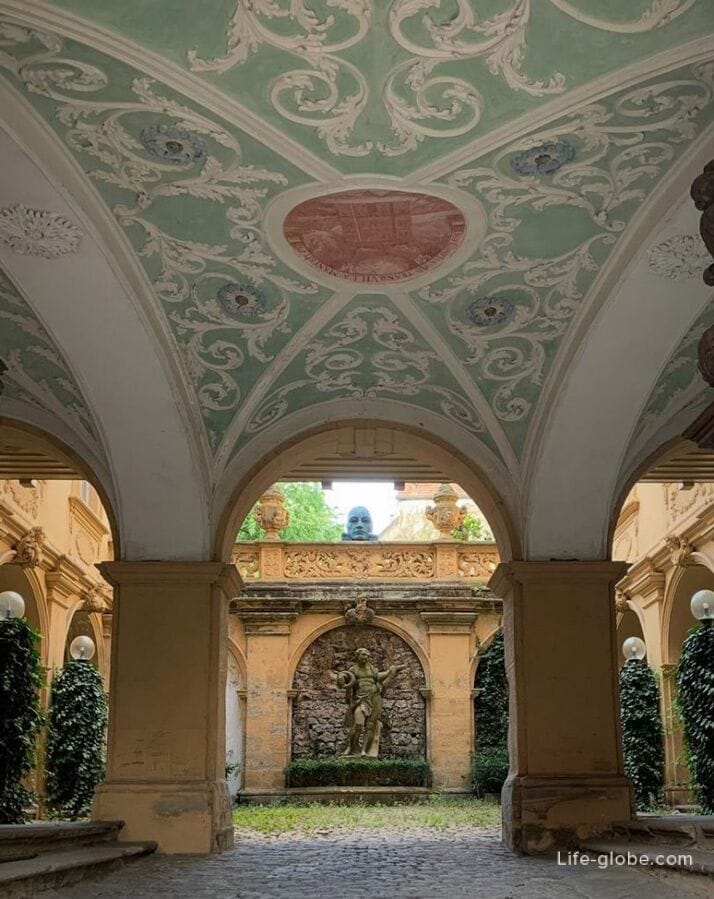
Villa Concordia is a true architectural monument of Bamberg and was originally built in 1716-1722 as a residential mansion for the court adviser Ignaz Tobias Bettinger.
Today this magnificent Baroque building is the International House of Artists (Internationales Künstlerhaus Villa Concordia), where there is an exhibition hall and a library.
The villa stands on the bank of the left arm of the Regnitz River (Linker Regnitsarm), which makes its appearance even more attractive.
Villa address: Concordiastraße 28, 96049 Bamberg.
Website: villa-concordia.de.
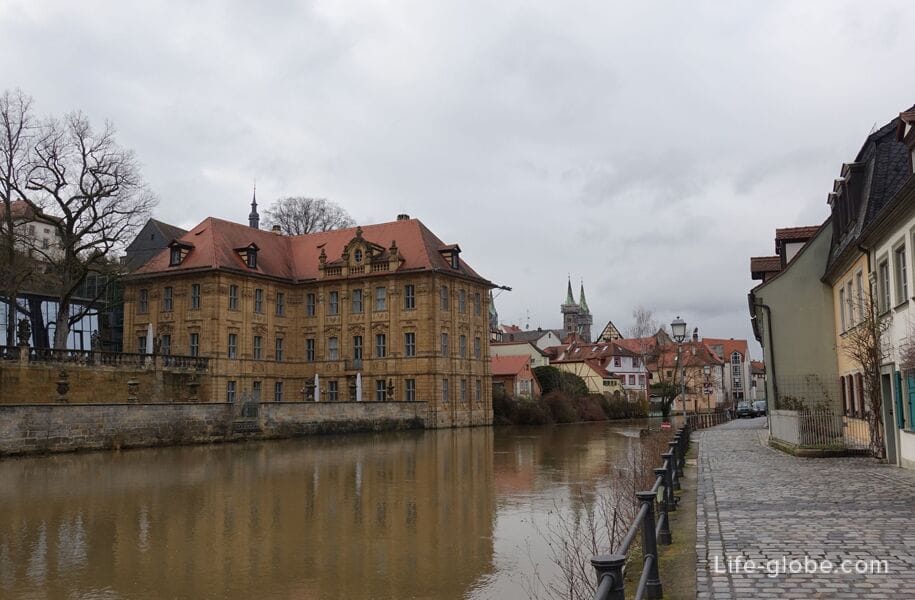
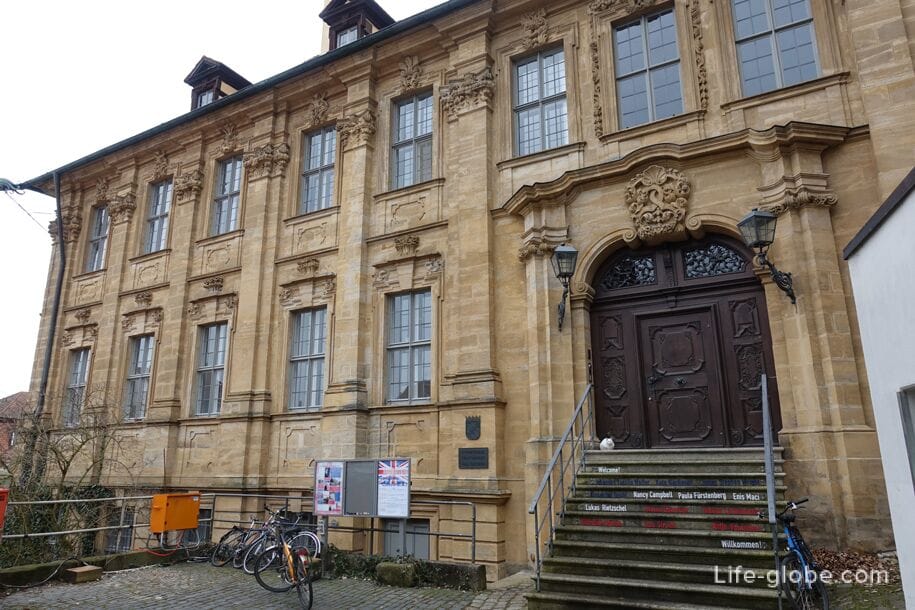
Altenburg Fortress or Altenburg Castle (Schloss Altenburg Bamberg) is a medieval fortress (castle), which is one of the most striking and important sights of Bamberg.
The first mention of Altenburg dates back to the beginning of the 12th century, although, most likely, since the 9th century there was some uninhabited strategic fortification at this place, which served mainly as a refuge for bishops and townspeople.
Today, the Altenburg fortress is not medieval in the literal sense of the word, it has been restored on the preserved parts and is a complex of buildings in the historical style, surrounded by a wall with towers.
On the territory of the fortress there are: the main palace of 1902 and a restaurant, a well of 1893, a Hoffmann's room, a 33-meter observation tower of the 13th century (you can climb to the observation deck of the tower), a bear cage, a chapel.
Panoramic views of the city of Bamberg and the surrounding area open from the observation terraces of the fortress.
Entrance to the fortress is free.
Coordinates of the Altenburg Fortress: 49°52'50.0"N 10°52'09.0"E (49.880556, 10.869167).
Altenburg Fortress website: altenburgverein.de. More about the Altenburg Fortress...
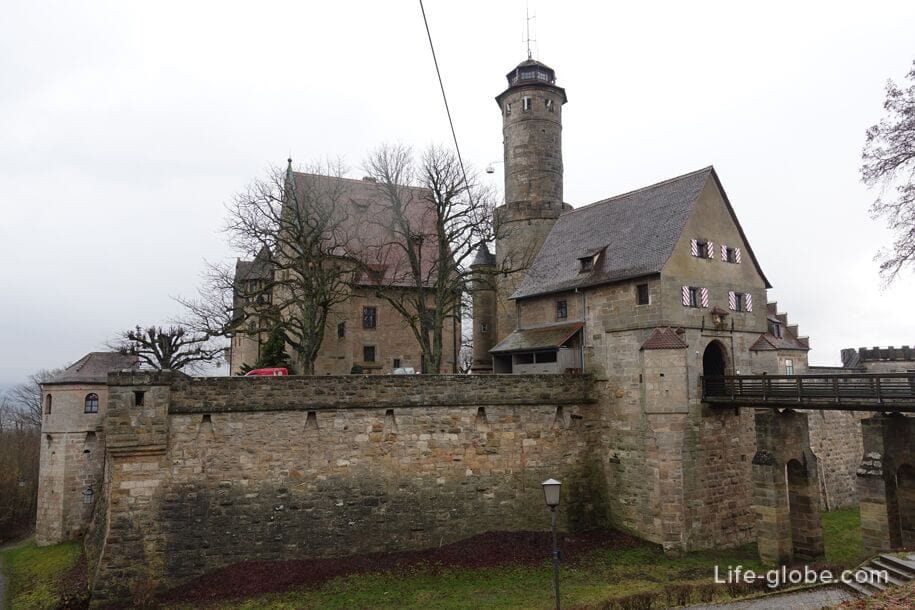

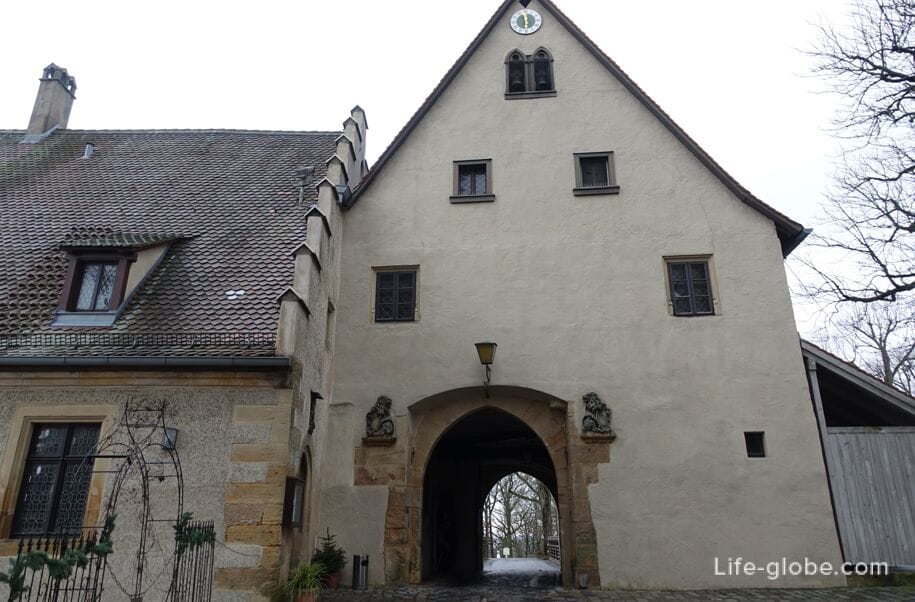
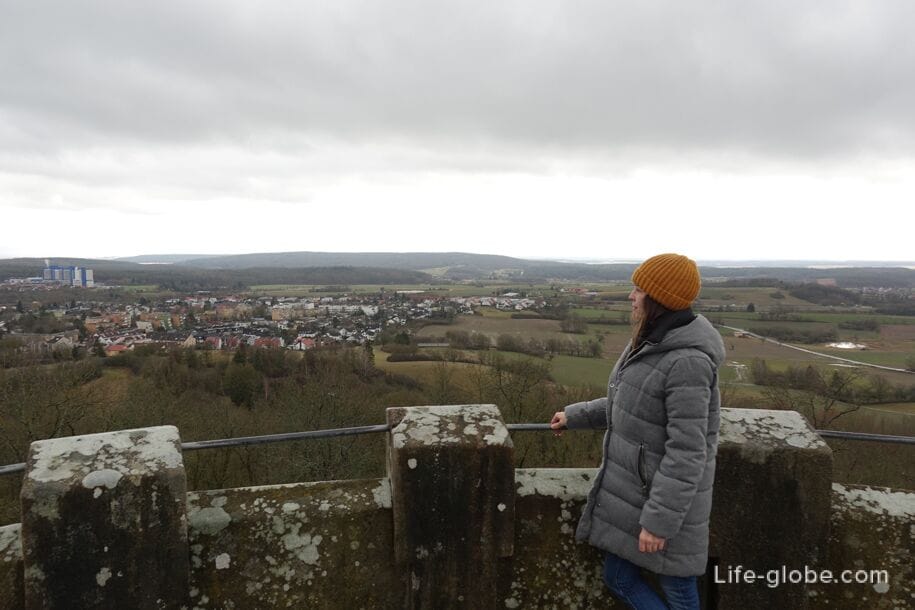
The Church of Our Lady or Upper Parish (Pfarrkirche Unsere Liebe Frau, Obere Pfarre) is a parish church, which is the only practically purely Gothic church in the city.
The popular name "Upper Parish" (Obere Pfarre) of the church was given because of its location on the Kaulberg hill, as an analogue of the Lower Parish - the former Gothic church of Alt St. Martin (Alt St. Martin) of the 14th and 15th centuries, which was located on Maximiliansplatz and was demolished during secularization in 1805.
The construction of the Church of Our Lady began in 1338.
Today, the Church of the Mother of God attracts attention with its size, architecture with portals and a bell tower, more than 60 meters high, the upper part of which forms the former home of the caretakers.
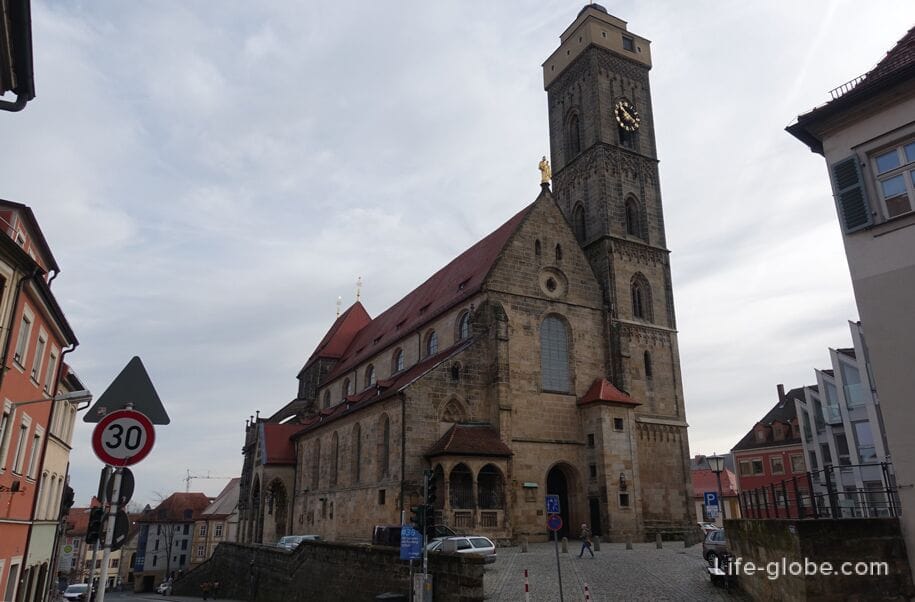
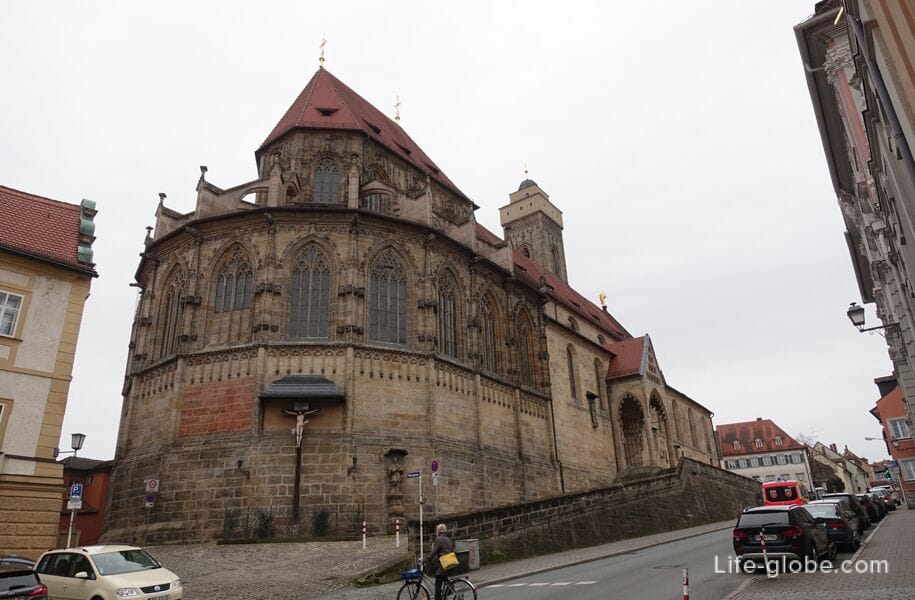
The interior of the three-nave Church of the Mother of God is notable for the ribbed vaults of the high choir, stucco molding, paintings, sculptures, the main altar in the Baroque style, Tintoretto's painting "The Assumption of the Virgin", the pulpit, the organ and the stone communion house of 1430, which was used to store the Eucharist.
The address of the Church of Our Lady: Frauenplatz, 1.
The website of the Church of Our Lady: kirche-obere-pfarre-bamberg.de. More about the Church of Our Lady...

The Carmelite Monastery (Karmelitenkloster Bamberg) was founded as a complex in the 12th century and rebuilt in the Baroque style by Leonard Dinzenhofer in 1692-1701.
Behind the entrance facade of the Baroque monastery is a magnificent late Romanesque monastery of the 13th century.
The Carmelite Church of St. Mary and St. Theodore (Karmelitenkirche St. Maria und St. Theodor) is located at the monastery.
Address of the monastery: Karmelitenplatz 1, 96049 Bamberg.
Website: karmeliten.de .
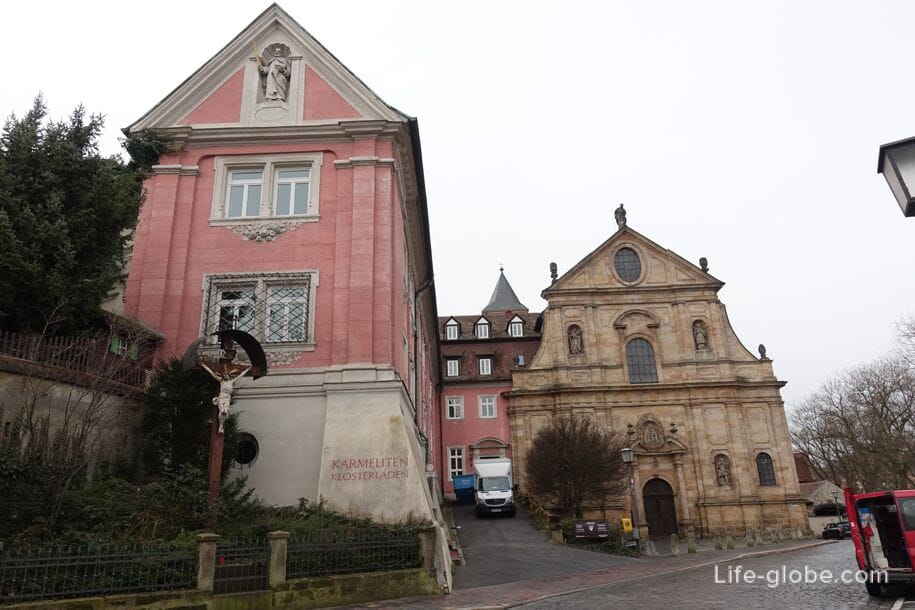
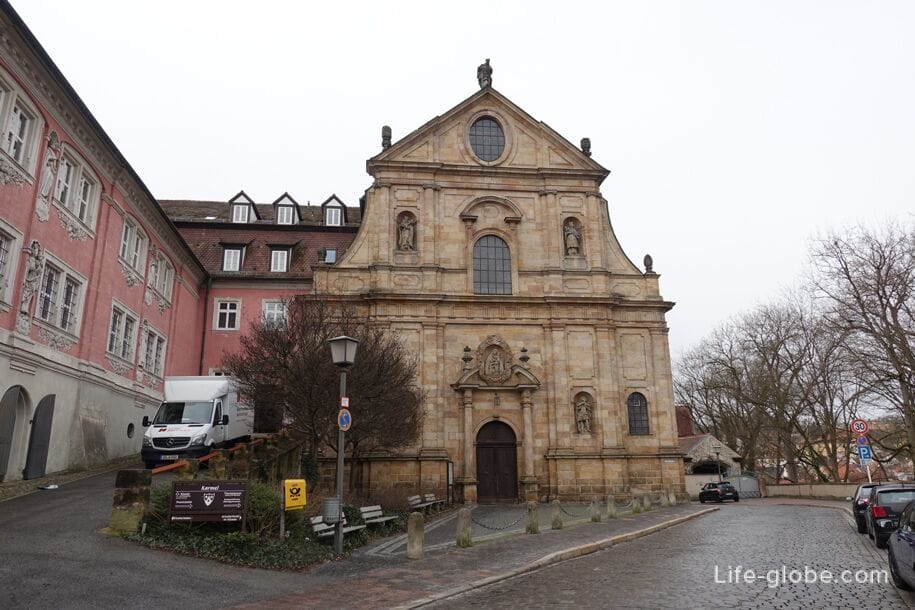


The representative villa (Villa Dessauer) of the Jewish hop merchant Dessauer was built in 1884 in front of the city gate in the grove area.
Today, the building houses the Stadtgalerie Bamberg, which hosts special exhibitions, mainly of contemporary art, as well as lectures and musical events organized by the museums of the city of Bamberg.
The address of the villa-gallery: Hainstraße 4, 96047 Bamberg.
Gallery website: villa-dessauer.
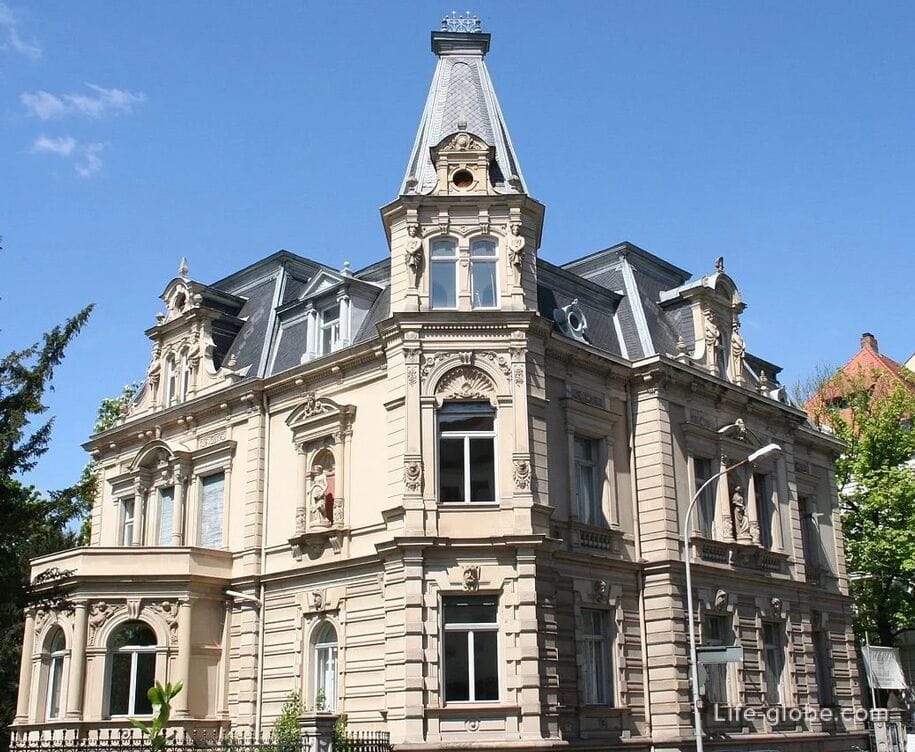
Bamberg is famous not only for its beautiful historical center, but also known as the beer city of Franconia.
There are many breweries with inns located within the city of Bamberg and in the surrounding area, where you can not only taste various foamy drinks, but also taste Franconian and Bavarian cuisine.
However, Bamberg itself is known primarily for its smoked (or smoky) beer (Rauchbier / Raubir), which is famous for the aroma of smoke and has already become legendary due to the taste that smoked malt gives to beer.
You can try smoked Bamberg beer in the historical brewery-beer "Schlenkerla" (Schlenkerla), which is located in the historical center of the city and has been operating since 1405 and where smoked beer is still poured from oak barrels with you, and smoked malt is historically obtained by roasting malt on an open fire. Learn more about smoked beer and breweries in Bamberg...
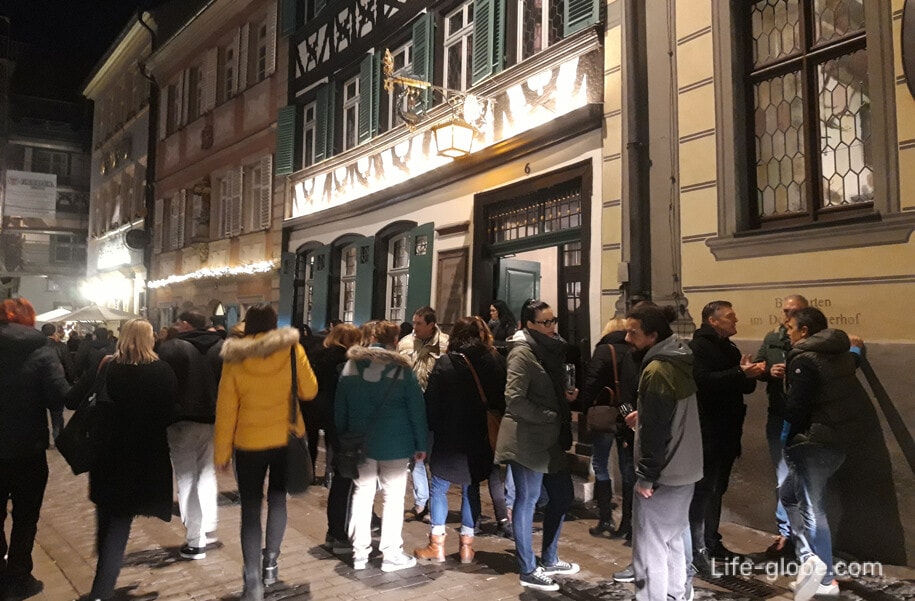


All accommodation facilities in Bamberg, including in the historical center of the city and more remotely from it, can be viewed and booked here